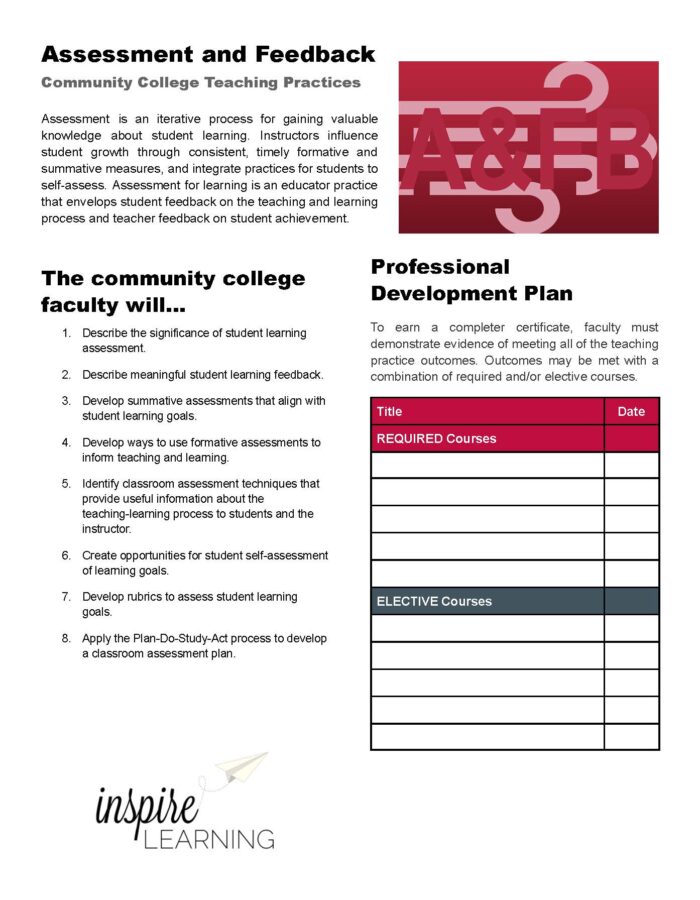Assessment and Feedback
Assessment is an iterative process for gaining valuable knowledge about student learning. Instructors influence student growth through consistent, timely formative and summative measures, and integrate practices for students to self-assess. Assessment for learning is an educator practice that envelops student feedback on the teaching and learning process and teacher feedback on student achievement.
The community college faculty will…
- Describe the significance of student learning assessment.
- Describe meaningful student learning feedback.
- Develop summative assessments that align with student learning goals.
- Develop ways to use formative assessments to inform teaching and learning.
- Identify classroom assessment techniques that provide useful information about the teaching-learning process to students and the instructor.
- Create opportunities for student self-assessment of learning goals.
- Develop rubrics to assess student learning goals.
- Apply the Plan-Do-Study-Act process to develop a classroom assessment plan.
Professional Development
To earn a completer certificate, faculty must demonstrate evidence of meeting all of the teaching practice outcomes. Outcomes may be met with a combination of required and/or elective courses. Access the CTL calendar to explore upcoming sessions.

Assessment for Learning
In this workshop, participants will apply a four-step teaching-learning-assessment process to course planning. We will explore contemporary approaches to assessment of student learning including specific examples from colleagues at MCC. Participants will practice using the Canvas outcomes and rubric tools to collect student learning data and provide relevant, timely feedback to students. Outcomes 2, 5, 7-8

Canvas Rubrics and Outcomes
A rubric is a type of scoring guide that articulated specific components and expectations for an assignment. In this session, participants will explore types of rubrics and create a rubric in Canvas to assess student learning. Additionally, Canvas outcomes will be used to align assignments and assessments to course competencies. Outcome 7

Rubric Essentials
As an assessment instrument, rubrics can provide clarity for students to assignment expectations and make grading more transparent and objective. For the faculty, it can ease the stress for fairness and consistency while also provide meaningful feedback that contributes to students learning. In this session you will discover the types of rubrics you can use and create one that is usable for an assignment. Bring your own assignment or one will be provided for you. Outcome 7

